I’ve been remiss in formally introducing my 1973 Autobianchi Giardiniera project car. The underlying goal is to update the car to an electric vehicle so it can continue its days as a more eco friendly version of its cool self. The master plan includes updates to modernize my Giardiniera without losing its classic charm. I thought I’d summarize my experience buying and importing a car, as I was grateful to read others’ stories when I was trying to figure out the whole process. It turned out to be pretty straight forward if you’re organized, and quite economical.
But first, why are Autobianchi Giardinieras so great?
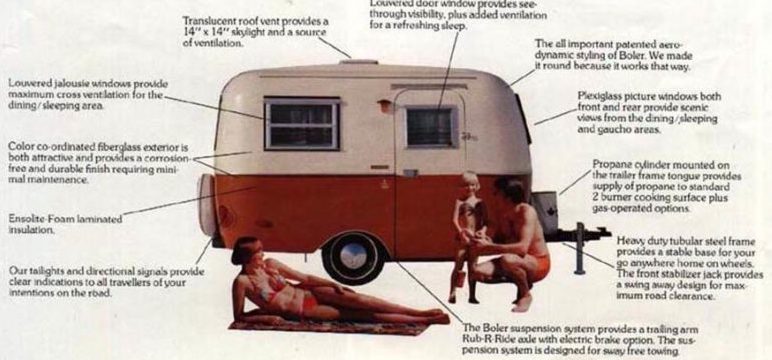
I was eyeing up several classic cars, but Giardinieras kinda stole my heart. I was immediately infatuated when I stumbled onto one years ago during an impromptu Internet rabbit hole session. We have a Boler camping trailer, so there’s a history of small, retro, well designed things on wheels in my life. I started stalking Giardinieras on the Internet, and it only strengthened my interest in these cool cars. So what makes it so great you may ask.
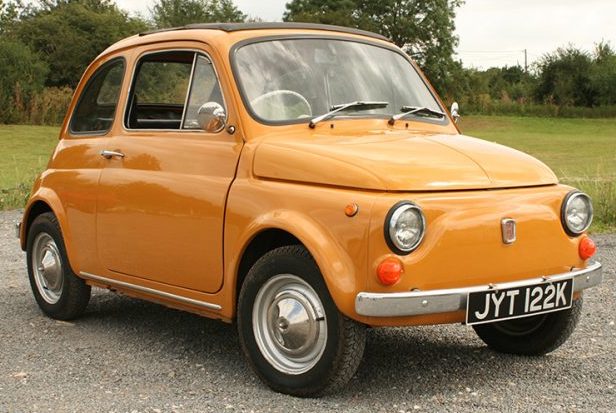
To understand the greatness of Giardinieras, you have to start with a bit of background. The Fiat 500 Nuova was designed to get post war Italy moving. Italian automobile designer and engineer Dante Giacosa designed the rear engine Fiat 500 (named after its near 500cc engine displacement) to be economical, functional and nimble on Italian roads. (He also went on to refine the use of front-wheel drive cars to an industry standard, but my focus here is on the various Fiat 500 versions.) The Fiat 500 design was ingeniously simple, including a canvas sunroof to save on steel use. While austere, it gave owners everything they needed in basic comfort. It proved to be very popular, with almost 4 million produced over its run from 1957 to 1975.
Other models were produced, like the ‘luxury’ L (slightly more refined trim), but the one that caught my eye was the Giardiniera or ‘garden’ version. (In North American terms, station wagon version, estate in the UK, K for kombi in Germany, etc.) Giacosa cleverly rotated the rear engine 90 degrees so it could be placed under the rear floor to allow for more storage in the car’s compartment.

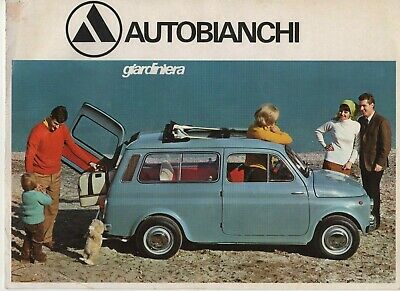
The Fiat Giardiniera was built from 1960 to 1968. The wheel base was lengthened about 10cm (approx 4 inches), and it made a surprisingly big difference. The canvas roof runs further back than the 500, and the design kept the very cool suicide door (doors open from the front – perhaps a touch dangerous though!) Due to its increased size and weight, the Giardiniera also gained stronger suspension (better for heavier loads) and the Fiat 600’s brakes. In 1968 Fiat transferred Giardiniera production to Autobianchi, a sister brand, which ran until 1977. The whole production run was about 327,000 Giardinieras. To top it off, while they’re quite collectable, they’re fundamentally a very modest car and are reasonably priced – even when in good shape or restored.
Super microcar
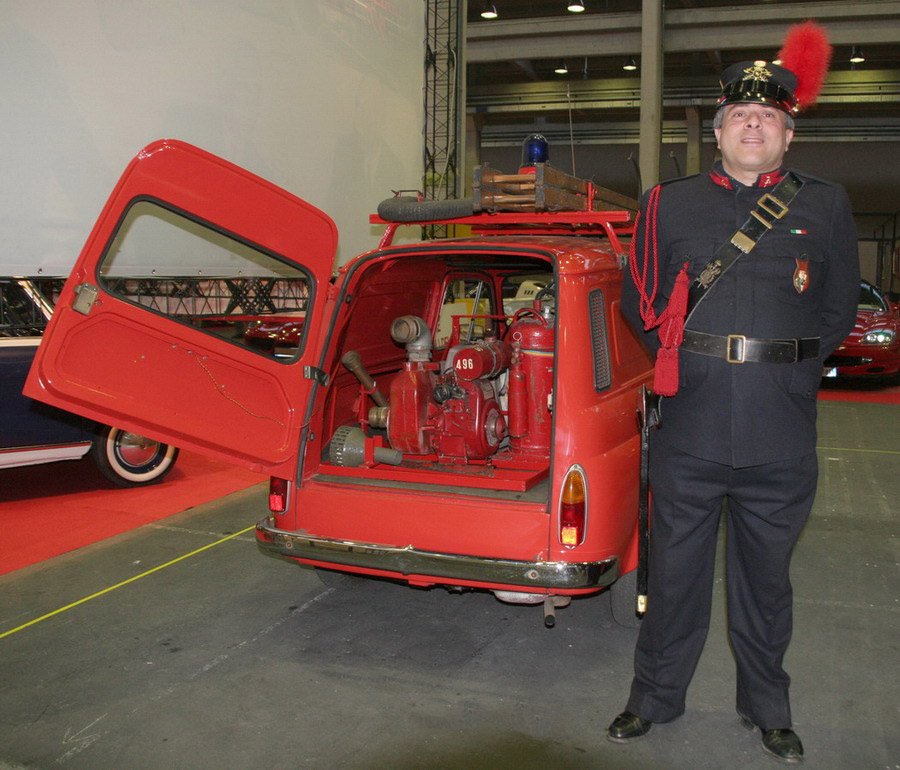
Yes, they’re small, alright; downright tiny, but for a classic microcar, the Giardiniera’s surprisingly roomy and has plenty of usable storage. It was marketed as a working person’s automobile and could transport 4 passengers with 40 kg of luggage or 2 people and 200kg of cargo. The rear seat-back folds down, making it ideal for families and craftspeople. There’s also the Furgoncino van version, that has no rear side windows, that was popular with trades and even at least one fire department! So far, I’ve used my little Giardiniera for errands like big grocery runs and transporting over 80kg of bags of garden soil. Pretty cool car, eh?
Autobianchi Giardiniera Specifications
Length: 3,190 mm (126 in)
Width: 1,330 mm (52 in)
Height: 1,340 mm (53 in)
Curb weight: 560 kg (1,230 lb)
Engine: 499cc Overhead Valve Straight-2 17.5 BHP
My target Giardiniera
I knew I wanted to convert a classic car into an electric vehicle. I’m sorry if some think that’s automobile blasphemy, but it’s as a way to keep awesome cars on the road. And as I stated above, I like the retro looks of some older cars, but I do want to make subtle technology upgrades (when viewed on the surface anyway) that update a car’s functionality to modern times. I thought a Giardiniera would fit the bill nicely.
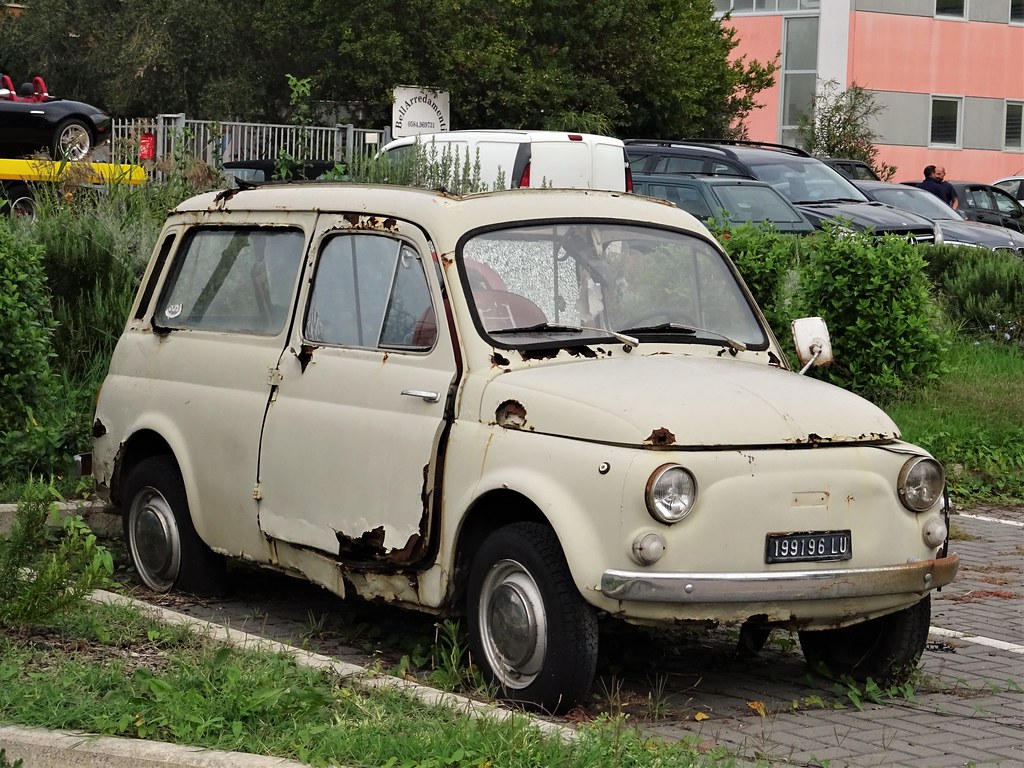
I’m not interested in doing body work at this time. I’m happy to work on mechanical systems, but I didn’t want to fully restore a car. I knew I’d have my hands full with the EV conversion, so I wanted a car already in great shape. Obviously I have a soft spot for this car, but I acknowledge that 17.5hp is quite lacking for modern traffic. I’m not looking for a ‘sleeper’ race car, but it would be nice to get up to normal traffic speed in less than a few blocks. An electric motor can definitely provide a power upgrade.
I didn’t have a colour in mind, but I ironically I didn’t want a quintessential Fiat 500 colour. Don’t get me wrong – I love the bright reds, yellows, greens, etc. colours, but perhaps that was pushing a Giardiniera too much over the novelty car line.
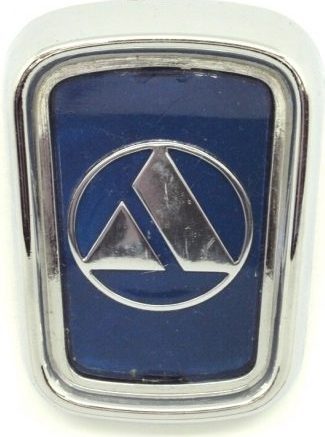
I also prefer the Autobianchi badging verses the Fiat badging. No slight to Fiat, I just find Autobianchi more unique than Fiat. Although I really liked the mid-century stylings of the “Autobianchi” spelled out, I decided the simplicity of the smaller ‘A’ emblem was the one I wanted. Small detail, but I latched onto it.
Finding a car
The main problem is, now that I had my heart set on a Giardiniera, there aren’t that many in North America, and even less in Canada. I started scouring the Internet for Giardinieras for sale. Of course, that led me to looking at cars located in Europe, especially in Italy.
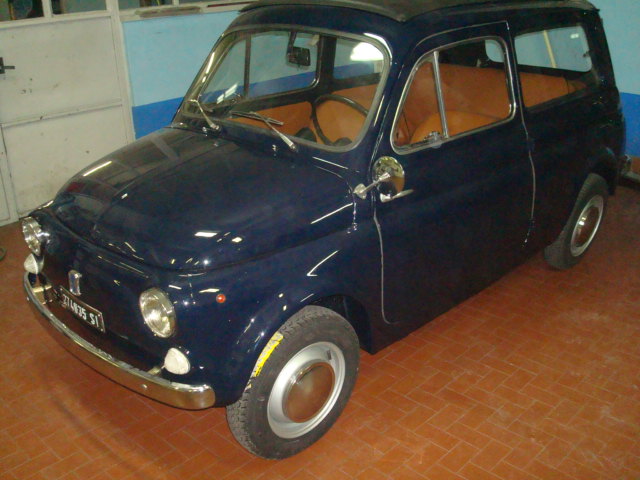
There seem to be a few go-to sites in Europe and Italy for buying cars, and I found kijiji.it a great source. I studied many cars posted there and on other sites, and contacted several sellers for more information. So when I came across this lovingly restored Autobianchi Giardiniera, it checked all the boxes. Great shape – check. Simple Autobianchi badging – check. Dark Blue (FIAT456: Blu Scuro) with tan interior – check. Reasonably priced – check. Only drawback – it was in Italy. So, I guess I’d be importing a car then.
Buying a car
The seller and I traded many emails, and a price was agreed upon. I had a very good feeling about everyone involved, and luckily, the car was being shown in a small car dealership in Northern Italy. This made is a bit easier to validate everything, and I even had some quick conversations with the dealership. My conversational Italian is non existent and my French is terrible (he spoke a bit of French), but the dealer was able to confirm the basics of the car deal. That helped settle some fears. In the end, I tried to do as much due diligence as I could, to make sure I wasn’t being scammed. (And probably the seller was concerned too.) But at the some point you have to take a leap of faith, send some money, and do the deal.
Then COVID-19 hit Italy really hard just as the transaction was happening. Perhaps now knowing what a pandemic really is like, I would have the foresight to put things on hold as the early pandemic signs were swirling. As it turned out, I had purchased the car, but the seller couldn’t actually file the paperwork. Italy was completely shut down. Honestly it was a bit frustrating waiting, but knowing that people of Italy were really struggling put my trivial inconvenience into perspective. It took months, but one day the seller let me know that he was able to file the paperwork. Looked like I had to figure out shipping!
Shipping a car
I had done some preliminary checking on shipping a car even before narrowing down a particular vehicle. Being a complete newbie, I didn’t want to find out that shipping cost more than the car itself. (With a car like this one, that’s not difficult!) If you have deep, deep pockets, you can always air freight your dream car overnight. For the rest of us, there are basically three ways to ship a car; container, shared container, and roll-on, roll-off (RORO or ro-ro).
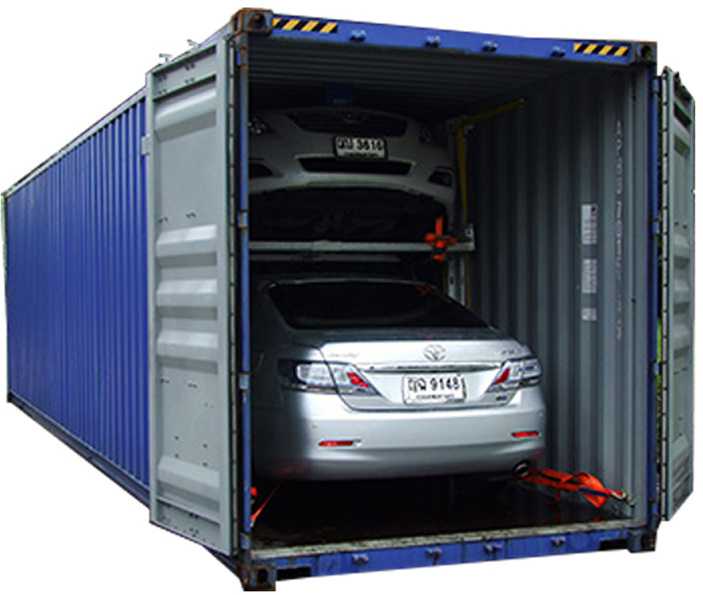
Getting a container is the just what it sounds like; you get your car loaded in one of those big shipping containers, strap it in tight, and it gets shipped to you. You pay for the whole container regardless of how big (or small) your car is. If you share a container, they load up two or even more cars into a container, so it’s a bit cheaper. Luckily I live in Vancouver, which is a large port, so there are port options, and I wouldn’t need to get it trucked further in-land.
Choosing a shipper
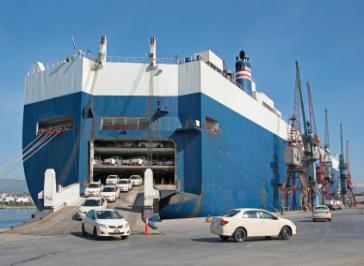
Being frugally minded, I wanted roll on, roll off. Again, the name says it all; they drive your car onto a ship with other cars, and then drive it off on the other end. New imports are delivered to Canada this way, and it’s a more affordable way to ship a car. I loved this car, but it wasn’t like it was a priceless relic, so I felt it was fine to use RORO. No one would offer RORO for my route though. I reached out to a lot of shippers, and surprisingly I received few responses. Luckily some did respond, and a few were reasonably priced, but all container based for some reason.
I had come to terms with the fact that I’d likely have to use a shared container. When it was time to ship my car though, COVID had really taken ahold of the world. Shipping schedules were completely indeterminate, and I had fears that my poor car would sit in some port parking lot for months or years waiting for a shared container. Being frugal, I was patient, but I didn’t want to wait forever.
That’s when I thought I would try one of the on-line shipping bid sites and see what I could find. I used uShip.com and it turned out great. I received some quotes – some expensive and some temptingly cheap. And Claudio from Carshipping Official reached out with a reasonable quote to ship my car using RORO carriers. After some investigation, it was another leap of faith, but I have nothing but praise for Claudio and Carshipping Official. Of course things took longer then expected due to COVID, but Claudio put up with my regular checkins.
My car’s journey
When Claudio’s agents picked up my car, it started its long journey around much of the globe. It went by trailer from Italy to Bremerhaven, Germany. My Autobianchi was then ROLO’ed onto a car carrier ship from Bremerhaven around Western Europe, and through the Mediterranean Sea. Then it travelled through the Suez Canal, stopping in some Asia Pacific ports, and made its way to South Korea. It waited in South Korea for a while before being loaded onto the final ship headed to North America, but first went down the West Coast to US ports. It even journeyed down to Mexico before it made it way up to New Westminster (a local port for car carriers).
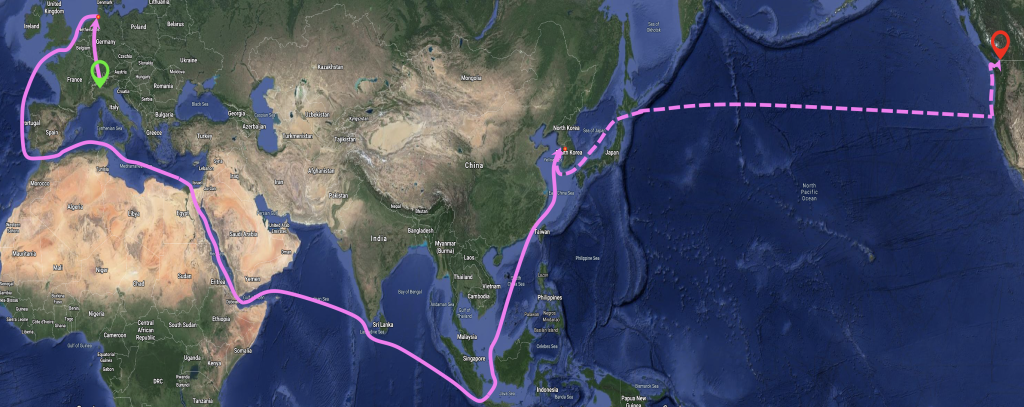
On a rainy fall day, the car finally made its last 20 or so kilometres on a flatbed trailer to get to its new home. They said its battery was dead and it wouldn’t start so they had to push it off, but they didn’t know the secret to starting an Giardiniera! (The starting lever is in between the driver and passenger seats.) It took a bit to cold start it after its long journey, but I excitedly drove it off the trailer and into my garage!
Importing a car
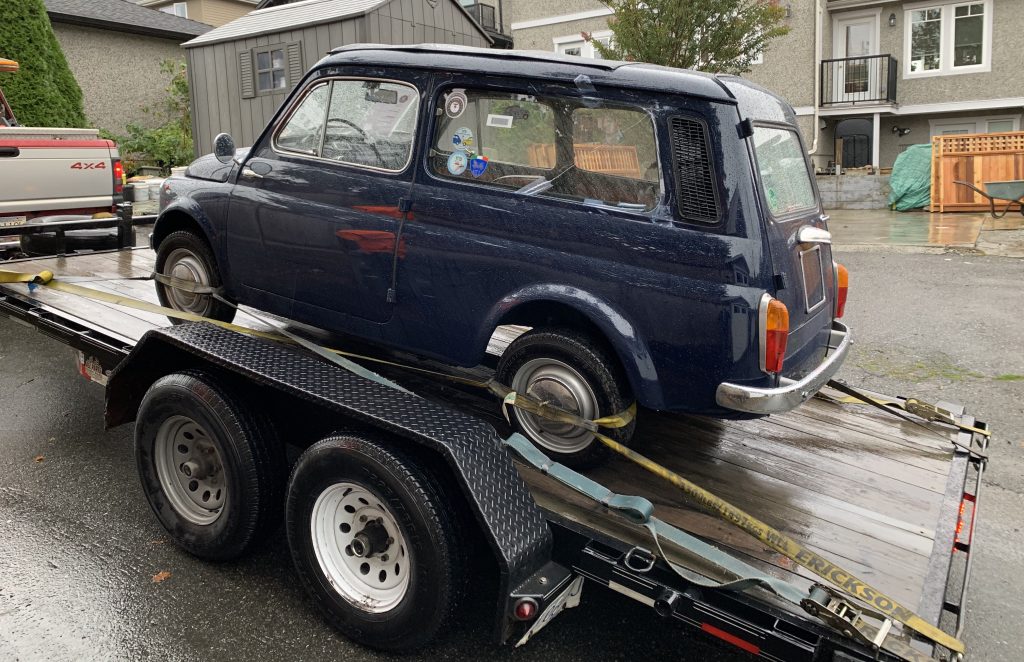
I had done some research on importing a car into Canada well before buying it. Again, I didn’t want to find out it was prohibitively expensive or just impossible. But due to its age, importing my Giardiniera was straight forward. In general, if a car is older than 15 years old, and as long as it meets the safety standards of its day, it can be imported into Canada.
Of course, you need to check the details for your dream car though. By all means call the Canada Boarder Services Agency and Transport Canada if you’re Canadian. Everyone I talked with was extremely friendly and helpful. I hope its the same for other countries. For clearing customs you’ll need the bill of sale, a certified translation and your details. You’ll pay duty (which wasn’t much for an old car) and GST (for non-Canadians, its Canada’s Goods and Services Tax). That said, again Claudio had me covered and had a broker lined up to ease the whole process. Since I had the documents ready, it was a breeze and the car cleared customs as it landed.
Insuring after importing a car
Before insuring a car in BC, you need to have it safety inspected. I had talked with Mark at Adria Import well before the car shipped. Mark/Adria Import are not only perhaps the best and most honest garage in the Lower Mainland, but are also certified for safety inspections. From photos and descriptions, he gave me a heads up that I at least needed amber front indicator lenses and some safety reflectors. I ordered these before the car had actually left Europe. When the car arrived, I changed the front lenses and applied some reflectors, bought some temporary day insurance and drove it Adria Imports. Mark was impressed that the car was in as good condition as the seller described and only had to make a few minor adjustments. And boom, my car was certified safe for BC roads.
I did hit a hiccup when I went to license my car though. I had missed that my province (and likely others) needed a translation of the car’s proof of previous registration. Luckily the translator I had contracted for the above bill of sale translation was speedy and helped me get the Italian registration translated as well (thanks Alice!). I then had to pay BC PST (Provincial Sales Tax), register my car and get my new BC plates. With that, my car was fully, legally on the road!
How the car drives and future plans
Importing a car has been quite the fun adventure so far, and the my Autobianchi Giardiniera is so much fun to drive! Yes, it drives a bit ‘raw’ (no power anything and has basic suspension!) and is under powered. It seems to make others smile too! I’ve had many people give me the thumbs up or roll down their windows to ask about the car at stop lights. I’ve been using the car around town too, and for errands as mentioned above. Its been a conversation piece almost anywhere I go. Although we didn’t really have snow this past winter, there were a few days when the roads were salted/brined, so I avoided driving it those days (old cars are basically biodegradable after all). That, and I avoid the really rainy days, as it isn’t exactly water tight!
My EV project plans
Yes, my overarching plan is to convert my car to electric. While some people say its cheaper to buy a used EV, that’s not quite the point. Really, its also about the project and the process. I’ve already roped my family into some of the work and want to bring them in more. And yes, I could probably get a hot rod Abarth type Giardiniera for less investment, but again, that’s not what I’m looking for.
I’m working on my conversion plan and hope to kick it off after enjoying the car throughout the summer. I considered doing the conversion this spring, but felt like I’d be rushing the process – I want to do a careful conversion.
The big decisions now are motor and range (ie batteries). The good news is that almost any EV motor will provide a considerable improvement in power. Plus I really don’t need much range. In my opinion, this is not a car suited for a freeway surrounded by large SUVs going 120km/h. I just want it for around Vancouver. A 30km day would be a lot of driving, so I’m targeting 80-100km range per charge. That way I don’t have to worry about hills or using the heater, etc. As it is, it will be a challenge to get enough batteries fitted in this microcar for that kind of range!
There are lots resources available, like a great on-line community of people converting their dream cars, and Vancouver Island has one North America’s top EV shops (Canadian Electric Vehicles) that has already provided guidance. When COVID eases, I’ll also look into the local EV meetup here in Vancouver. There’s also lots of spares and knowledge available from on-line Fiat shops, and other on-line communities like the Fiat Forum.
Side projects to modernize my car
For side projects to help modernize the car, here’s a partial list that I’m working through:
- seatbelts – a requirement of my wife
- stereo – I love music even when you can barely hear it over the noise of the engine! (but soon that will fixed too)
- CarPlay system – I like this modern convenience, so I’m working on a ‘stealth’ install to keep the interior mostly classic
- LED lighting – mostly to be seen (headlights), but also to save energy
- upgraded drive shafts – will likely need to handle more EV power
- front disc brakes – the drums definitely work, but they need quite a bit of pressure to really engage (as I learned carrying that soil!)
I think Dante Giacosa was an engineering genius. While he didn’t make the ‘best’ cars in term of speed and handling performance, he made some of the best cars in terms of value and functionality. So I named my Autobianchi Giardiniera after Giacosa – meet my Autobianchi Giardiniera, Dante.
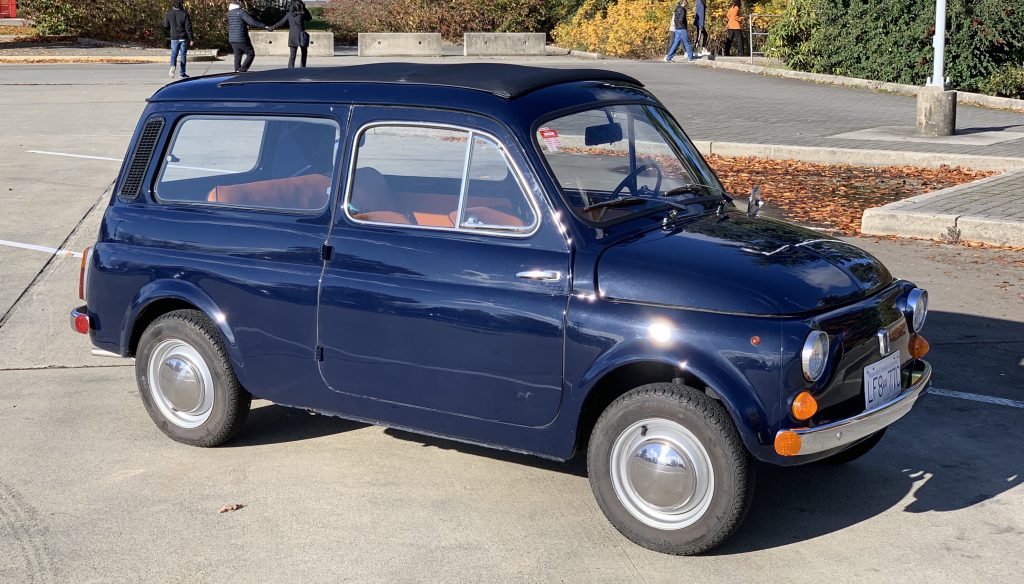
You can track Dante’s progress here in my here in my blog, follow @evmanic on Instagram, and subscribe on YouTube.


Glen
Hey thanks for the detailed write-up on importing. I live across the water from you in Victoria and wondering about the import costs. If you don’t mind me asking, what’s the ballpark for RORO from Italy to Vancouver?
And the EV will be very cool when you get that done! How’s it going?